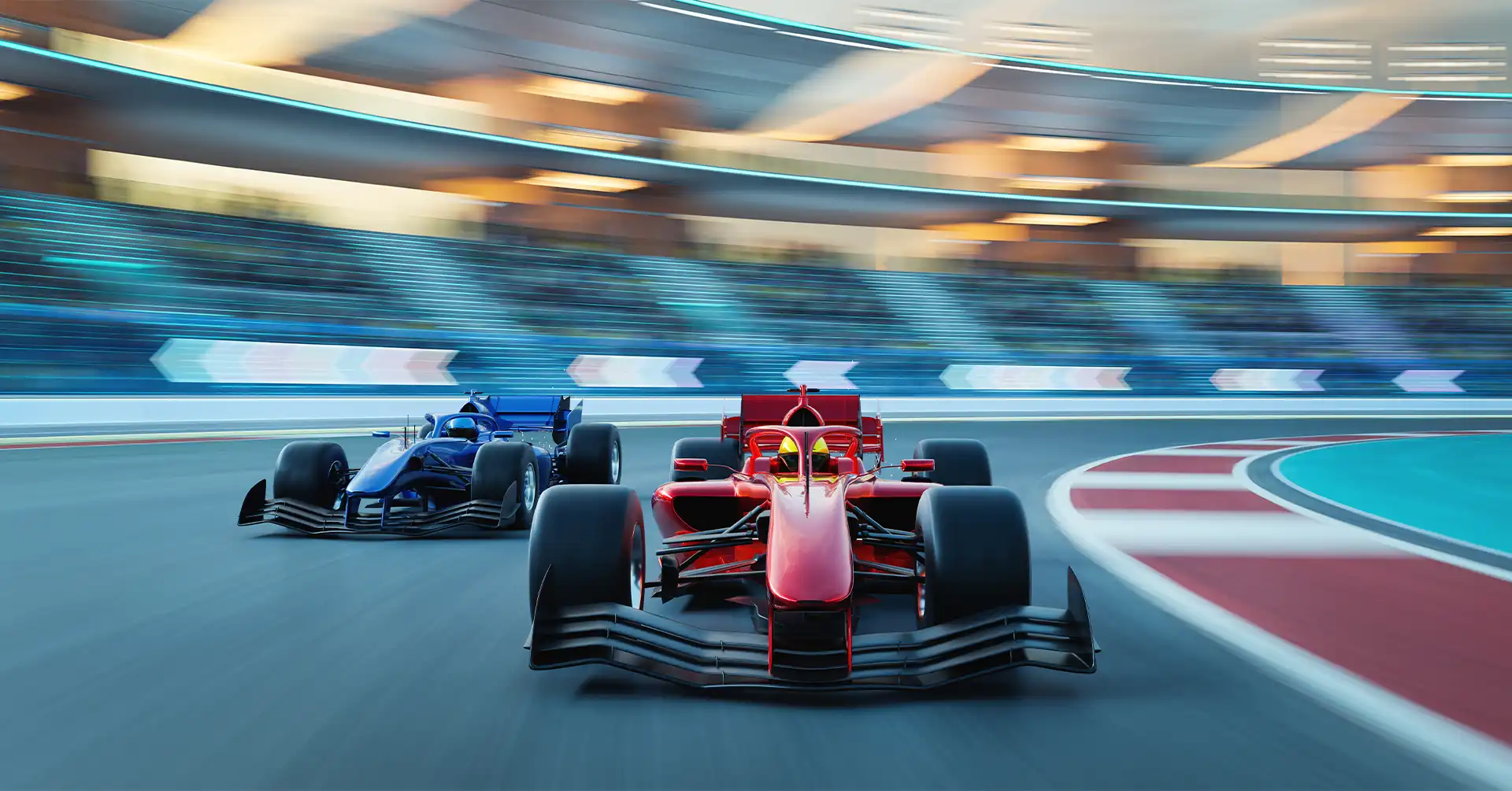Hello, my wonderful readers! In the exhilarating world of Formula 1 racing, the F1 pit stop stands as the epitome of efficiency. Each meticulously choreographed maneuver is a ballet of precision and speed, executed flawlessly by a team of highly trained professionals. From the moment the roaring race car screeches into the pit lane to the split-second tire changes and refueling, every second counts. The F1 pit stop is not merely a routine maintenance break; it is a strategic masterpiece where races can be won or lost in the blink of an eye.
Behind the scenes, engineers analyze data, strategists crunch numbers, and mechanics fine-tune equipment, all to minimize time spent in the pits without compromising performance on the track. With lightning-fast reflexes and nerves of steel, pit crews work in perfect harmony to orchestrate a symphony of efficiency amidst the chaos of high-speed competition.
In this blog, we delve into the heart of the F1 pit stop, exploring the technology, teamwork, and tactics that make it one of the most captivating spectacles in motorsport. Join us as we unravel the intricacies of this adrenaline-fueled ballet and discover what sets F1 pit stops apart as the ultimate showcase of engineering prowess and human skill.
Why a F1 Pit Stop is Skill?
An F1 pit stop is a testament to the unparalleled skill and expertise of the entire team involved. From the mechanics to the engineers to the strategists, each member plays a crucial role in executing a flawless pit stop.
First and foremost, the mechanics must possess exceptional dexterity and speed. They are responsible for swiftly changing tires, refueling the car, and making any necessary adjustments within seconds. This requires physical agility and the ability to remain calm under immense pressure.
Furthermore, the engineers play a vital role in analyzing data and communicating with the driver to determine the optimal time for a pit stop. To devise the most effective strategy, they must assess tire wear, fuel levels, and track conditions. This demands a deep understanding of the intricacies of the race and the ability to make split-second decisions.
Additionally, the pit crew must work seamlessly as a team, relying on clear communication and perfect coordination to ensure that every aspect of the pit stop is executed precisely. Each member knows their role and executes it with unwavering focus, understanding that the slightest mistake could cost valuable time on the track.
Moreover, the driver’s skill is also paramount during a pit stop. They must navigate the pit lane at high speeds, hit their marks with pinpoint accuracy, and seamlessly rejoin the race without losing momentum. This requires exceptional control and awareness behind the wheel.
An F1 pit stop is a true showcase of skill, from the lightning-fast mechanics to the engineers’ strategic genius to the driver’s precision. It is a choreographed ballet of speed and precision, where every fraction of a second counts.
F1 Pit Stop as a High-Octane Sport Itself
An F1 pit stop is not merely a routine maintenance task but a high-octane sport in its own right, characterized by adrenaline-fueled action, split-second decisions, and unparalleled teamwork.
At the heart of this spectacle are the mechanics, whose lightning-fast reflexes and precision are akin to athletes in a high-speed sport. They must execute tire changes, refueling, and adjustments with unparalleled speed and accuracy, often completing these tasks in seconds. Each movement is honed through rigorous training and practice, making the pit crew akin to elite athletes on the racing stage.
Furthermore, the engineers play a crucial role in the pit stop sport, acting as strategists and tacticians. They analyze data in real time, monitoring tire wear, fuel levels, and race conditions to determine the optimal moment for a pit stop. Like coaches on the sidelines, they make split-second decisions that can ultimately determine the race’s outcome.
The Pit Crew
The pit crew operates as a cohesive unit, relying on clear communication and flawless coordination to ensure that every aspect of the pit stop is executed seamlessly. Each member has a specific role, whether changing tires, operating the fuel hose, or adjusting the car’s settings. Their synchronized movements resemble a well-rehearsed dance performed under the intense pressure of the race.
Moreover, the driver’s role must be recognized in this high-octane sport. They must navigate the pit lane at high speeds, hitting their marks with pinpoint accuracy and rejoining the race seamlessly. Like athletes competing in a fast-paced event, they must maintain focus and control, knowing mistakes could cost valuable time and position on the track.
The F1 pit stop transcends mere mechanics and becomes a high-octane sport in its own right. It showcases the athleticism, skill, and teamwork of all involved, adding an extra layer of excitement and drama to the world of Formula 1 racing.
Evolution of F1 Pit Stop
The evolution of the F1 pit stop has been a remarkable journey, marked by continuous innovation, technological advancements, and a relentless pursuit of speed and efficiency.
In the early days of Formula 1 racing, pit stops were a far cry from the lightning-fast maneuvers we see today. They were often leisurely affairs, with drivers stopping to refuel and change tires at a more relaxed pace. However, as the sport became increasingly competitive, teams realized the importance of minimizing time spent in the pits.
The first breakthrough in pit stop evolution came with pneumatic jacks in the 1970s. These hydraulic devices allowed mechanics to lift the car off the ground easily, significantly reducing the time needed for tire changes. This innovation paved the way for faster and more efficient pit stops, revolutionizing how teams approached race strategy.
As technology advanced, so did the tools and techniques used in pit stops. The introduction of air guns in the 1980s allowed mechanics to rapidly remove and replace lug nuts, further speeding up tire changes. Meanwhile, improvements in fueling systems enabled teams to refill the car’s tank in seconds, minimizing the time spent stationary in the pits.
In the modern era of Formula 1 racing, pit stops have reached new levels of efficiency and precision. Teams now employ highly specialized pit crews comprised of mechanics, engineers, and strategists, all working together in perfect harmony to execute flawless pit stops.
Technology
Cutting-edge technology, such as real-time data analysis and simulation software, allows teams to optimize pit stop strategy to the smallest detail.
Moreover, rule changes and regulations have also played a role in shaping the evolution of pit stops. Restrictions on refueling and tire compounds have forced teams to adapt their strategies and techniques, leading to further innovations in pit stop procedures.
Overall, the evolution of the F1 pit stop is a testament to the relentless pursuit of excellence in motorsport. From humble beginnings to the high-speed precision of modern pit stops, it is a journey that exemplifies the spirit of innovation and competition that defines Formula 1 racing.
Conclusion
The F1 pit stop epitomizes efficiency, showcasing the perfect fusion of human skill, technological innovation, and strategic prowess. From its humble beginnings to the high-speed choreography of modern-day pit stops, the evolution of this vital aspect of Formula 1 racing reflects the relentless pursuit of excellence in motorsport.
Through decades of innovation and refinement, pit stops have transformed from leisurely affairs to lightning-fast maneuvers that can make or break a race. Every aspect of the pit stop, from tire changes to refueling to strategic decision-making, is executed with precision and speed, with every fraction of a second meticulously analyzed and optimized.
Moreover, the F1 pit stop is not just a technical marvel but also a testament to the power of teamwork and collaboration. Seamlessly working together, pit crews rely on clear communication and flawless coordination to ensure they execute every aspect of the pit stop flawlessly.
Ultimately, the F1 pit stop encapsulates the essence of Formula 1 racing – the relentless pursuit of perfection, the quest for speed, and the thrill of competition. It is a spectacle that continues to captivate audiences worldwide, showcasing the unparalleled skill and expertise of the teams and drivers who make it all possible.
Read More:
Fire Pit Ideas: Backyard Fire Pit Ideas!
The Dangers of Doing Too Much: Mental & Physical Health Impacts






